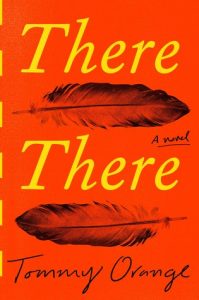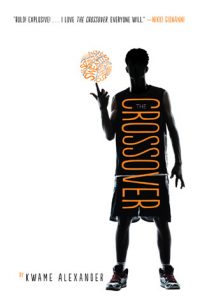I hope it’s been a summer full of good books for you! This is just a sampling of the many books I’ve read over the summer — the ones I really enjoyed and think you might too! As always, I don’t post reviews of books I couldn’t get through or didn’t love.

Tommy Orange’s debut novel is already getting a lot of love, but I have to chime in with my praise, too. For one thing, There, There is set in Oakland, where I lived for most of the 90s, and reading it brought back a lot of memories. The author hits us with a buckshot blast of wonderful characters, self-described “Urban Indians,” each with his/her own short, interwoven chapters. We follow their interconnected lives as they prepare for the first Big Oakland Pow Wow. They are drawn there for many different reasons — to reconnect, to make money, to dance, to record stories. Unfortunately, a few of them are planning to rob the Pow Wow. Orange provides deft, beautifully crafted portraits of their lives, so by the time the hold-up come and (SPOILER) the heist does not go as planned, we care about how all of them will fare. The ending is perfect — unfinished, jagged with emotion, and yet still full of perseverance and hope. I won’t say this read was ‘easy.’ It packs an emotional wallop. But the pages fly by, thanks to the short chapters and varying points of view.

I am late in reviewing this, but oh my goodness, what an amazing book. Kwame Alexander gives us a novel in verse — a series of poems about twin brothers, JD and Jordan Bell, sons of a former pro basketball player, who are making their way through middle school as best they can — navigating first crushes, homework, family tensions, and of course, basketball. I was in awe of Alexander’s ability to tell such a rich, multifaceted story with so few words. Poetry is hard, at least for me, yet Alexander, like all great athletes and writers, makes the three-point shots look easy. You will laugh in this book, many times. You will also cry. You’ve been warned. You will want to know more about the characters’ lives, but you will also put down the book with a satisfied sigh, knowing the ending was perfection. It’s a quick read, even for a slow reader like me. I kept thinking, so many times, I wish I’d had this book when I was teaching in the 90s. My students would have devoured this — the basketball players, sure, but everyone else, too.

I’ve been a fan of Mark Lawrence’s gritty ‘grimdark’ fantasy novels for a long while now, but I think Red Sister may be my favorite. (Sorry, Prince of Thorns. I still adore you.) Elevator pitch? Okay, it’s reductive, but imagine Hogwarts as a nunnery that trains young girls to be assassins. The world of Abeth orbits a slowly dying sun. As a result, most of the world is encased in ice except for an ever-shrinking corridor along the equator, where humanity is squeezed together, fighting for survival. A satellite mirror, the “Focus Moon,” passes over each night, reflecting the dying sun’s concentrated light along the corridor in a losing battle to keep the ice at bay. It’s a world in which magic and science co-mingle. Four bloodlines, from the original human inhabitants who came ages before, sometimes manifest themselves in present-day children. Gerants are huge and strong. Hunsa are fast and dexterous. Marjal control shadowy and elemental magic. Quantal have the ability to walk the Path — pulling on the subatomic strands of the universe’s fabric to see the future, connect their minds to others’, or even manipulate reality. Our hero Nona Gray is a child from the edges of society, sold into slavery by her own mother for reasons not quite clear. She is about to be hanged by a local constable for a heinous crime when she is rescued — if ‘rescued’ is the right word — by the Abbess of the Sweet Mercy Convent. Nona is taken in, and her training begins . . . Fabulous, in-depth world building, great characters, and as always with Lawrence, plotting that is fresh and unpredictable. Upon finishing, I went out immediately and bought the sequel, Gray Sister. If you like fresh, take-no-prisoners fantasy, this is for you.

My favorite recent history book, Mann surveys the breadth and complexity of indigenous cultures in the Americas before the arrival of Columbus. Some of this research was familiar to me. When I taught American history in the 2000s, I would start with such ‘snapshots’ of Cahokia, the Olmecs, the Serpent Mound, the Maya, the great trade networks that connected the continent. But even that information was hard to find. Good luck finding even a mention of it in the school textbooks. Despite having some knowledge, I was blown away, again, by how populated and cultivated the American landscape was before the cataclysmic arrival of Europeans and their diseases. This book blows up many stubborn, out-dated theories like the singular Bering land-bridge migration, the idea that the land was ‘mostly empty’ when Europeans arrived, and the idea that most indigenous peoples were ‘simple’ hunter gatherers. It also gives us a good look at just how stubborn and resistant traditional Euro-American scholarship has been to accepting any new information that didn’t fit established theories about the indigenous peoples. None of this will comes as a surprise to indigenous readers themselves, I’m sure, but for me, it was a refreshing, amazing read. I knew nothing about the vast, sophisticated terraforming societies of sub-Amazonian South America, or the pre-Incan empires, or the way that hunter-gatherer people intentionally crafted the landscape to better serve their needs. Mann gave me a tantalizing glimpse into a complex, beautiful pre-Columbian world.






